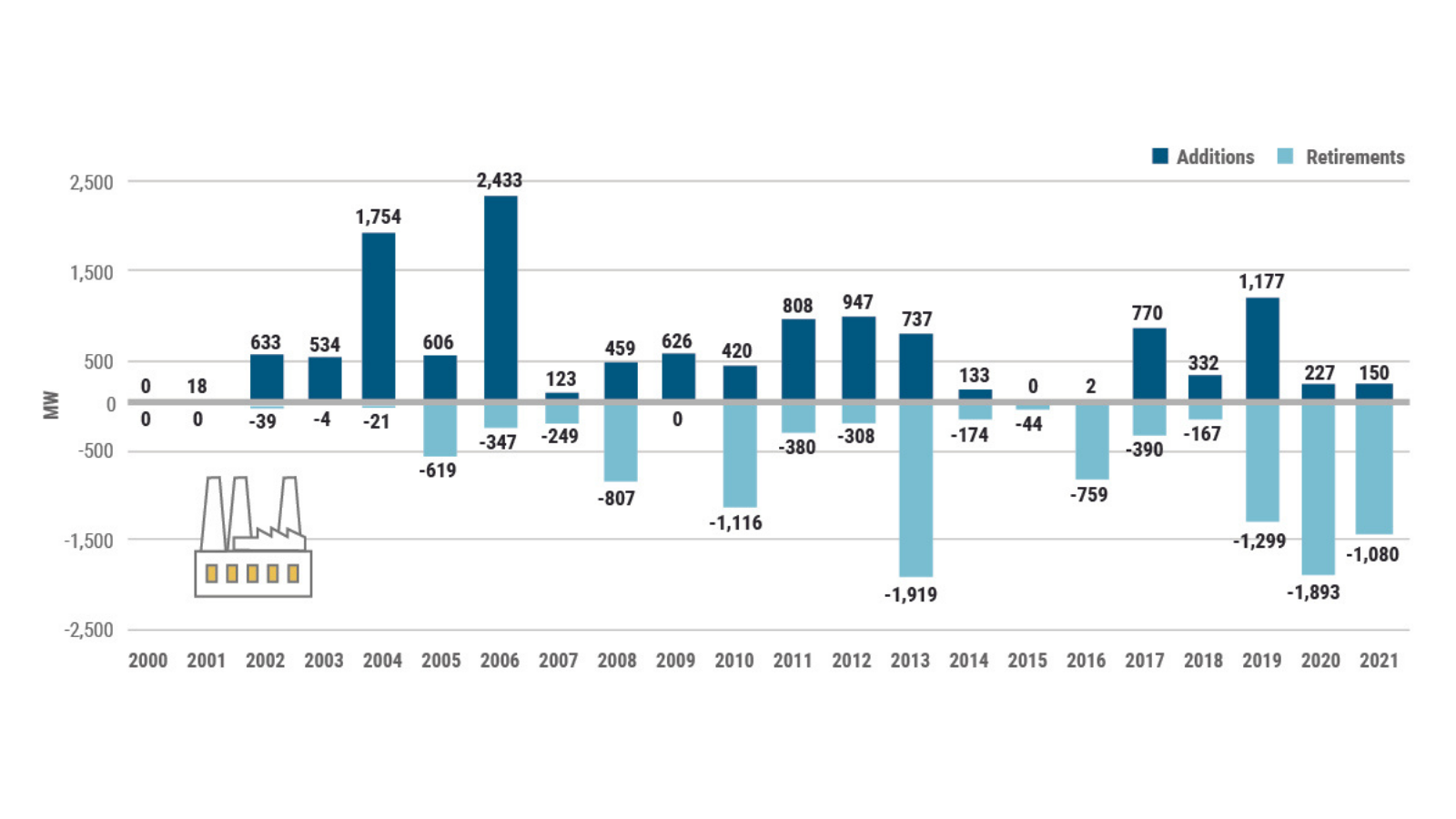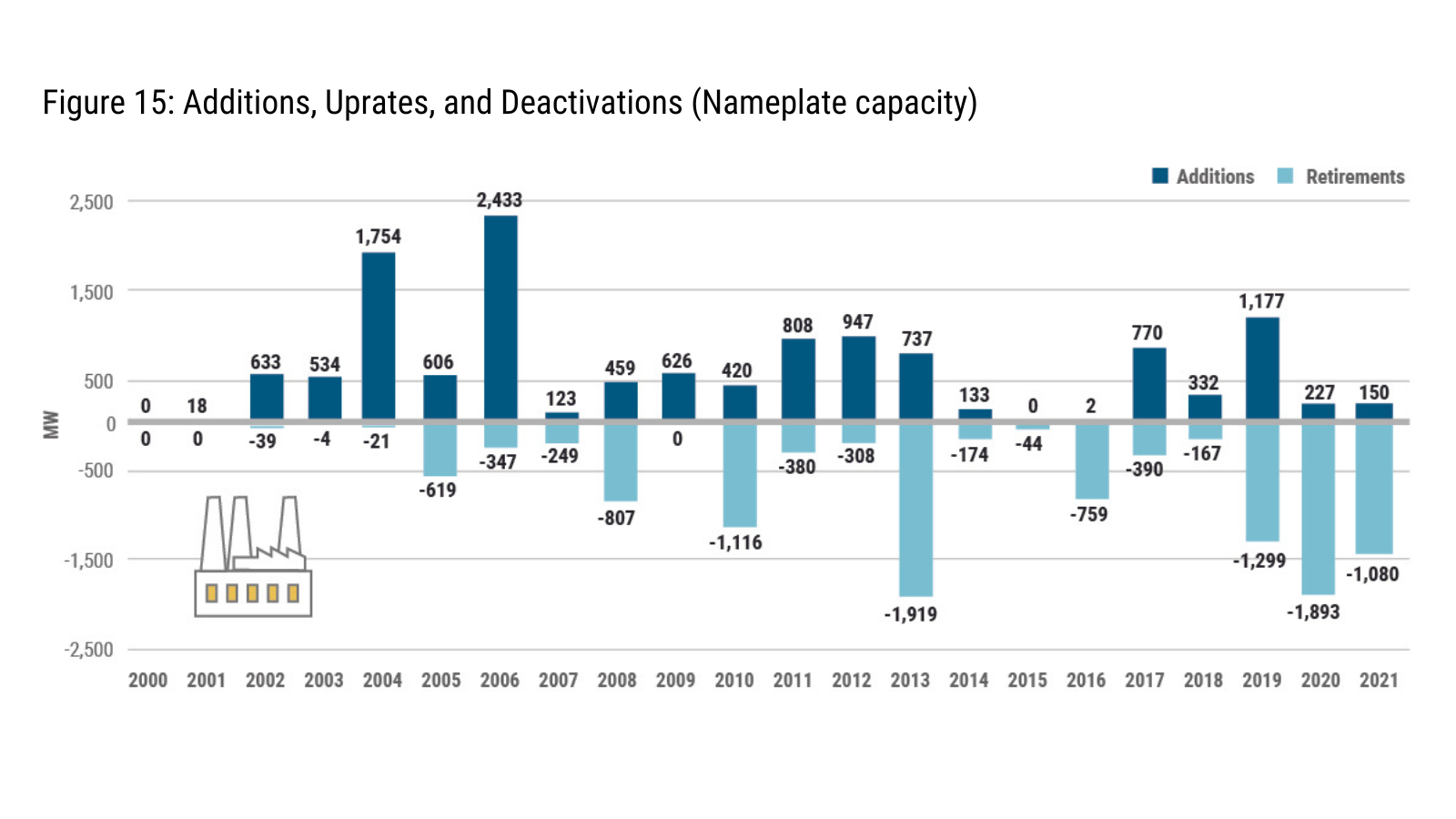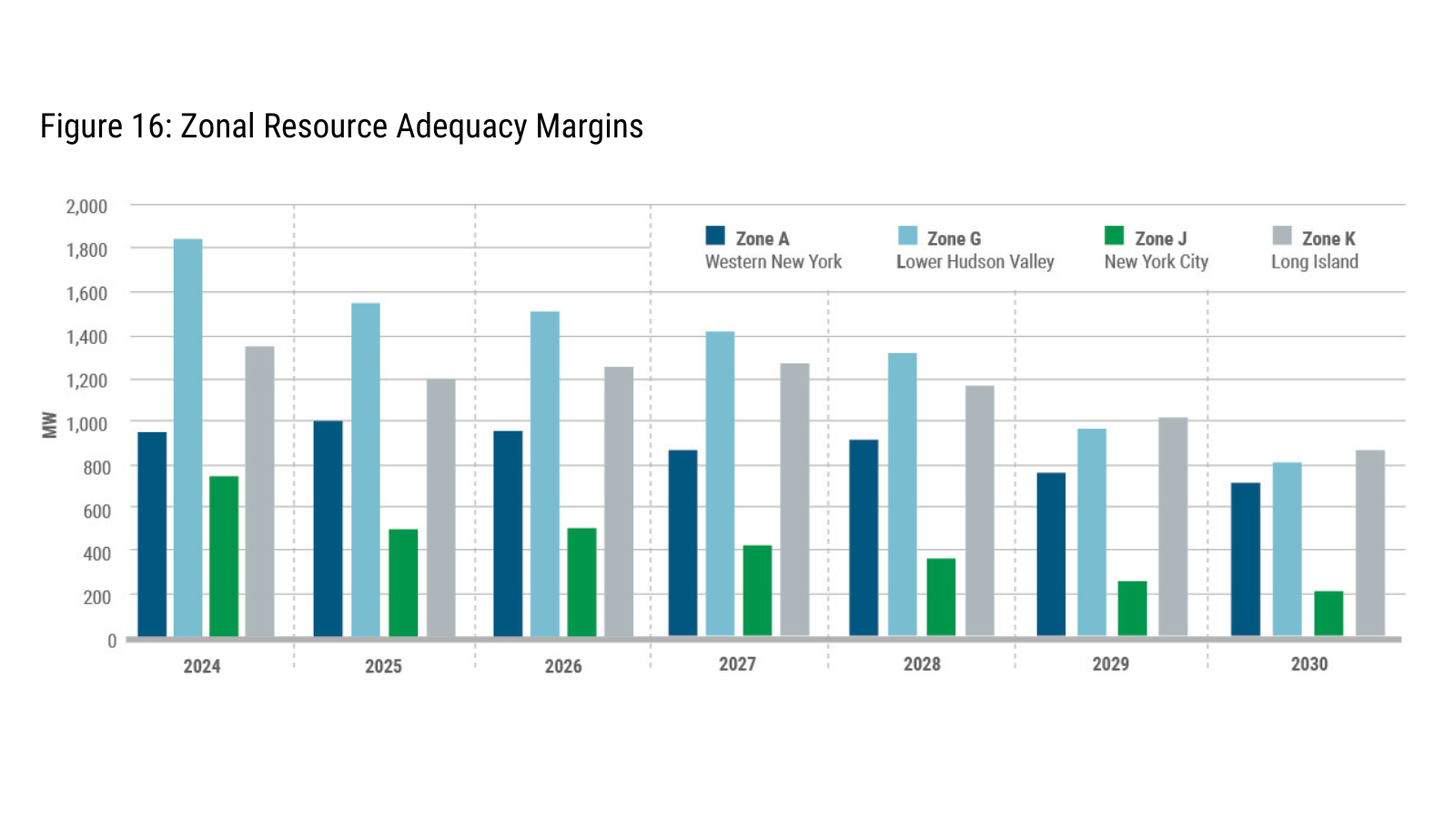Grid Reliability Requires a Careful Transition from Fossil Fuels

A clean energy transition is underway. As fossil fuel plants retire and new renewable resources supply our energy needs, we need to move carefully to maintain reliability on the electric grid. A successful transition to a zero-emissions grid means synchronizing the addition of clean energy resources with the retirement of fossil-fuel generators to protect reliability.
This transition to the zero-emissions grid required by the Climate Leadership and Community Protection Act will require a careful balance of different elements. We need to maintain adequate flexible energy supply to make up for the times when sun or wind aren’t available. We also need to make sure that energy supply is located in the right locations, and that we have adequate transmission to move power from where it's generated to where it’s being consumed.
Competitive, wholesale markets can help with this transition, by sending the right economic signals to developers to invest in new technologies in the right geographic area to best serve the grid. These markets leverage competition to keep electricity as cost-effective and efficient for New Yorkers as possible, and to help make sure we’ve got adequate resources in place in the future.
It's vital that, as we're going through this transformation, we focus on maintaining a reliable system. Reliability margins, designed to protect reliable operation, are already diminishing across the state. That means, at times of high demand, there is a limit to how much supply generators can provide. If a generator or transmission line goes out of service, there isn’t as much reserve available to make up for the loss. We’re forecasting reliability margins to shrink in upcoming years in several regions of the state.
Why is this? From 2019 to 2021, the New York grid lost more than 4,200 megawatts (MW) of generation. This includes 2,000 MW of reliable and emission-free nuclear power, along with flexible fossil fuel resources located close to New York City and its suburbs, the state’s largest load centers.
During this same time, the grid saw only about 1,500 MW worth of new resources, located both further from the areas where demand is highest and comprised mostly of solar and wind, meaning power may not always be available due to intermittency.
Improving transmission will help. Plans for new energy storage resources will also help provide a cushion, but batteries do not generate electricity and can only provide power for a few hours.


Our models show that by 2030, New York City (Zone J) could have a reliability margin of only 200 MW to serve a peak load of more than 10,000 MW.
Extreme weather, notably an extended heat wave, creates its own concerns. Our models show possible weather-related risks to reliability in New York City as soon as 2028. This is due to expected increased demand from air conditioning during hotter days.
While we are seeing reduced demand in some areas from growth of behind-the-meter solar energy and energy efficiency improvements, this is surpassed by significantly higher load-increasing impacts from electric vehicles, growth of cloud-computing data centers, and electrification of building heat.
In order to fill these gaps, we’ll need long-duration storage technologies that can store energy to be made available at high-demand times in summer and winter.
The grid will also need sufficient flexible and dispatchable resources to balance variations in wind and solar resource output. These resources need to be long-duration, dispatchable, and emission-free. Essentially, they will have the attributes of fossil generators (responding quickly to rapid system changes) without the emissions.
Such resources are not now commercially available and may not be for many years.
That’s why our number one mission at the New York ISO is to maintain reliability throughout this transformation, making sure adequate supply is located in the right locations and adequate transmission is available to move that power around to reliably meet demand.
Download the full Power Trends 2022 report, datasheet, and resources here.
